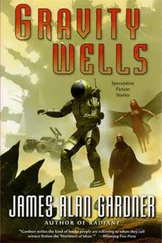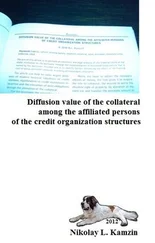The confident presentation of an idea in classic style should not be confused with an arrogant insistence that it is correct. Elsewhere in his essay, Greene does not hide the fact that many of his fellow physicists think that string theory and the multiverse are extravagant and unproven. He only wants readers to understand them. Thomas and Turner explain that the reader of classic prose “may conclude that a text is masterful, classic, and completely wrong.” 9
And for all its directness, classic style remains a pretense, an imposture, a stance. Even scientists, with their commitment to seeing the world as it is, are a bit postmodern. They recognize that it’s hard to know the truth, that the world doesn’t just reveal itself to us, that we understand the world through our theories and constructs, which are not pictures but abstract propositions, and that our ways of understanding the world must constantly be scrutinized for hidden biases. It’s just that good writers don’t flaunt this anxiety in every passage they write; they artfully conceal it for clarity’s sake.
Remembering that classic style is a pretense also makes sense of the seemingly outlandish requirement that a writer know the truth before putting it into words and not use the writing process to organize and clarify his thoughts. Of course no writer works that way, but that is irrelevant. The goal of classic style is to make it seem as if the writer’s thoughts were fully formed before he clothed them in words. As with the celebrity chef in the immaculate television kitchen who pulls a perfect soufflé out of the oven in the show’s final minute, the messy work has been done beforehand and behind the scenes.
The rest of this chapter is organized as follows. The first subsection introduces the concept of “metadiscourse,” followed by one of its principal manifestations, the use of signposting. The second subsection reviews three issues: the problem of focusing on a description of professional activity rather than an exposition of subject matter, the overuse of apologetic language, and the disadvantages of excessive hedging. Following this, the third subsection explains the issue of prespecified verbal formulas. The fourth subsection covers issues having to do with excessive abstraction, including overuse of nominalizations and passives. Finally, I will review the main points of the preceding discussion.
Did you get all that?
I didn’t think so. That tedious paragraph was filled with metadiscourse—verbiage about verbiage, such as subsection, review, and discussion . Inexperienced writers often think they’re doing the reader a favor by guiding her through the rest of the text with a detailed preview. In reality, previews that read like a scrunched-up table of contents are there to help the writer, not the reader. At this point in the presentation, the terms mean nothing to the reader, and the list is too long and arbitrary to stay in memory for long.
The previous paragraph reviewed the concept of metadiscourse. This paragraph introduces one of its primary manifestations, the phenomenon of signposting.
Clumsy writers do a lot of that, too. They unthinkingly follow the advice to say what you’re going to say, say it, and then say what you’ve said. The advice comes from classical rhetoric, and it makes sense for long orations: if a listener’s mind momentarily wanders, the passage she has missed is gone forever. It’s not as necessary in writing, where a reader can backtrack and look up what she’s missed. And it can be intrusive in classic style, which simulates a conversation. You would never announce to a companion, “I’m going to say three things to you. The first thing I’m going to say is that a woodpecker has just landed on that tree.” You’d just say it.
The problem with thoughtless signposting is that the reader has to put more work into understanding the signposts than she saves in seeing what they point to, like complicated directions for a shortcut which take longer to figure out than the time the shortcut would save. It’s better if the route is clearly enough laid out that every turn is obvious when you get to it. Good writing takes advantage of a reader’s expectations of where to go next. It accompanies the reader on a journey, or arranges the material in a logical sequence (general to specific, big to small, early to late), or tells a story with a narrative arc.
It’s not that authors should avoid signposting altogether. Even casual chitchat has some signposting. Let me tell you a story. To make a long story short. In other words. As I was saying. Mark my words. Did you hear the one about the minister, the priest, and the rabbi? Like all writing decisions, the amount of signposting requires judgment and compromise: too much, and the reader bogs down in reading the signposts; too little, and she has no idea where she is being led.
The art of classic prose is to signpost sparingly, as we do in conversation, and with a minimum of metadiscourse. One way to introduce a topic without metadiscourse is to open with a question:
This chapter discusses the factors that cause names to rise and fall in popularity.
What makes a name rise and fall in popularity?
Another is to use the guiding metaphor behind classic style, vision. The content in a passage of writing is treated like a happening in the world that can be seen with one’s eyeballs:
The preceding paragraph demonstrated that parents sometimes give a boy’s name to a girl, but never vice versa.
As we have seen, parents sometimes give a boy’s name to a girl, but never vice versa.
And since seeing implies seers, we no longer have to refer to paragraphs “demonstrating” some things and sections “summarizing” other things, as if blocks of printing had a mind of their own. The active parties are the writer and the reader, who are taking in the spectacle together, and the writer can refer to them with the good old pronoun we. That supplies him with still other metaphors that can replace metadiscourse, such as moving together or cooperating on a project:
The previous section analyzed the source of word sounds. This section raises the question of word meanings.
Now that we have explored the source of word sounds, we arrive at the puzzle of word meanings.
The first topic to be discussed is proper names.
Let’s begin with proper names.
As for the advice to say what you said, the key is the expression “in other words.” There’s no sense in copying a sentence from every paragraph and pasting them together at the end. That just forces the reader to figure out the point of those sentences all over again, and it is tantamount to a confession that the author isn’t presenting ideas (which can always be clothed in different language) but just shuffling words around the page. A summary should repeat enough of the key words to allow the reader to connect it back to the earlier passages that spelled out the points in detail. But those words should be fitted into new sentences that work together as a coherent passage of prose in its own right. The summary should be self-contained, almost as if the material being summarized had never existed.
Metadiscourse is not the only form of self-consciousness that bogs down professional prose. Another is a confusion of the writer’s subject matter with his line of work. Writers live in two universes. One is the world of the thing they study: the poetry of Elizabeth Bishop, the development of language in children, the Taiping Rebellion in China. The other is the world of their profession: getting articles published, going to conferences, keeping up with the trends and gossip. Most of a researcher’s waking hours are spent in the second world, and it’s easy for him to confuse the two. The result is the typical opening of an academic paper:
Читать дальше












